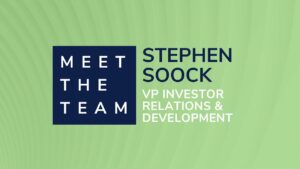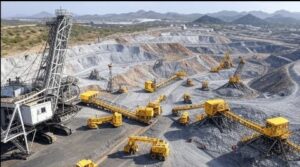Vancouver, B.C. – March 19, 2013 — Geologix Explorations Inc. (the “Company” or “Geologix”) is pleased to announce the results of its Prefeasibility Study (“PFS”) at its 100% owned Tepal Gold-Copper Project (the “Project” or “Tepal”) in Mexico.
HIGHLIGHTS
- The Project’s estimated post-tax NPV, at a 5% discount, is $421 million with an IRR of 28%.1
- The Project’s estimated pre-tax NPV, at a 0% discount, is $925 million with an IRR of 36%.1
- The Project’s estimated payback period is 2.7 years pre-tax and 3.2 years post-tax.1
- Pre-production capital costs for the Project are estimated to be $354 million.
- The Project is expected to produce an average of 117,000 ounces of gold and 49 million pounds of copper annually over its initial seven years of operation.
- The Project has an estimated mine life of 11.5 years, and an average milling rate of 38,700 tonnes per day.
- Life of mine cash costs of production, net of by-product credits, are estimated to be $170/oz. for gold or $0.62/lb. for copper. 1
1Based upon statistical four year trailing average metal prices stated in the ‘Economics’ section below
“We are very pleased to announce the completion of Tepal’s PFS, and encouraged by these promising results,” stated Dunham Craig, Geologix’s President and Chief Executive Officer. “The production estimates presented by the PFS exceed our previous internal estimates, and we believe the anticipated pre-production capital costs are manageable. “
“As a result of a redesign of our mill process plant, the completion of this PFS took several months longer than we initially anticipated. Fortunately, the Company utilized this delay to acquire vendor, contractor, and supplier quotations for all major equipment, construction costs, and supplies required by the Project. The benefit of these refined quotations is a significant increase in the accuracy of our operating and capital cost estimates.”
“Geologix also proceeded with work on a Feasibility Study for Tepal during these months. As a result, we anticipate completing this major milestone during the current year. The other major objective in our near future is to secure financing for the Project’s pre-production capital cost of $354 million. We believe this funding should be available through a consortium of metal traders and streamers, smelters, equipment financiers, and commercial bank syndicates. The Company is currently in active discussions with multiple institutions within these groups.”
Summary Economics
Summary PFS economics are detailed below. Economic metal prices used are derived from statistical trailing price averages for three year, four year and five year periods through February 2013. Four year trailing metal price averages are used for the base case economics outlined below unless otherwise noted. All dollars are expressed in $USD.
Three year (“3 Year”) metal price average: $1,518/oz. gold, $29.58/oz. silver, $3.71 /lb. copper
Four year (“4 Year”) metal price average: $1,390 /oz. gold, $26.03 /oz. silver, $3.44 /lb. copper
Five year (“5 year”) metal price average: $1,286 /oz. gold, $23.68 /oz. silver, $3.32 /lb. copper
Construction and Production Schedule
Two years have been allocated for construction of both the mill and site construction. Oxide milling would commence during the latter half of the second year of construction. Commissioning of the sulphide circuit at designed mill capacity would reach completion at the conclusion of the second year of construction. Production would begin immediately afterwards, and continue for a total of 11 years.
Mining
The Base Case economics utilise a mining fleet lease term sheet delivered in December 2012 from Caterpillar (Tracsa), Mexico. The lease terms are for a five-year lease period at a 5% interest rate. After the five-year period, the Company would have 100% ownership of the fleet. Mining costs per tonne are based solely on fleet operating costs. Leasing costs are applied separately and included in overall operational costs.
Ore reserves are located in three open pits (North, South and Tizate Pits), and would be mined sequentially, targeting the highest value ore in the initial seven years in order to both facilitate early capital payback and maximize Project economics. Standard open pit mining methods would be used, involving industry standard drilling, blasting, and material movement equipment. A new Caterpillar fleet, for which quotations have already been received, would serve as the operation’s major equipment. This fleet would include 789D (181 ton) trucks, 6050 hydraulic loaders, 994H and 992K wheel loaders, D10T Track Dozers, and MD6540 rotary drills.
A waste stripping mining contractor would be used to supplement the mine fleet in production years six through ten. Mining costs, as well as both a 15% contractor profit and mobilization charges, have been included in the economic model for the tonnes moved by the contractor.
Processing
All PFS Oxide and Sulphide ore is to be processed though a milling operation. An oxide heap leach facility was designed in the April 2011 Preliminary Assessment. During the preparation of the PFS, the Company completed extensive metallurgical optimization work. Overall gold and silver recoveries were increased by milling all ore, as well as the addition of a leaching circuit to produce a doré product for delivery to a refinery. This redesign resulted in a reduction of pre-production capital costs, an increase in pit mining scheduling efficiency, and an increase in the Project’s overall economics.
Mill processing rates vary over the life of mine due to different ore hardnesses identified by extensive metallurgical variability studies. The North pit ore would be milled at 40,000 tonnes per day (“tpd”), while the South and Tizate pits would be milled at 35,000 tpd. The annual rates in the financial model have been adjusted for this variable milling rate.
Copper, Gold, and Silver Concentrate Processing
Initial grinding is proposed at a nominal 150 micron (“µm”) size before being sent to a rougher/scavenger circuit for copper, gold, and silver recovery. Tailings from this circuit would then be sent to a pyrite rougher/scavenger circuit to produce a separate pyrite concentrate. The rougher copper, gold, and silver (“Cu/Au/Ag”) concentrate would be reground to a finer 25 µm size and processed through a cleaner circuit to produce a final concentrate for shipment to an offshore smelter. The Cu/Au/Ag concentrate is expected to have excellent commercial qualities with no impurities, a characteristic that is in high demand within the concentrate market.
Sulphide Ore Gold and Silver Processing to Doré
Separate to the Cu/Au/Ag concentrate process, the pyrite concentrate would be combined with the tailings from the first copper cleaner circuit. This blend would comprise approximately 12% of the mill ore feed, which contains approximately 24% of the total sulphide payable gold. The concentrate would be leached in a standard carbon in leach (“CIL”) circuit, resulting in Au/Ag doré being produced on site and shipped for refining. The sulphide Au/Ag processing circuit is designed for 5,400 tpd.
Oxide Ore Gold and Silver Processing to Doré
Oxide ore would be processed through the same grinding circuit as the sulphide mill in a monthly scheduled batch campaign. Ore would be ground to 150 µm and diverted into a surge pond for drawdown by the Au/Ag CIL leach circuit. A separate set of oxide CIL leach tanks are designed so that the oxide and sulphide Au/Ag recovery circuits do not co-mingle ores. Au/Ag doré would be produced on site and shipped for refining. The oxide processing circuit is designed for a capacity of 6,850 tpd.
Production Costs
Production costs are derived from vendor quotations for consumable items, including power, without incorporating potential cost reductions from bulk discount applications or long-term contract rates. Labour is calculated from recent Mexican mining labour surveys and currently operating Mexican mines.
Capital Cost Summary
Contingency
Contingency has been applied at variable rates, based on whether a fixed price quotation or an estimated cost was used. All major mining and milling equipment has a fixed price quotation. Contractor quotations derived from design drawings have been received for the majority of construction costs and tailings facility construction.
Power
Electrical power would be supplied by CFE, the federal power authority in Mexico. Project power would come from Apatzingán, requiring re-cabling 50 kilometres of an existing power line for a larger capacity to Tepalcatepec. From Tepalcatepec to the Project site, 14 kilometres of new transmission line would be capitalised. Power line cost estimates were based on 85 megawatt peak demand load. However, 65 megawatt is the final calculated peak demand load forecast, indicating the costs may be overestimated. Both electrical power supply to site cost and on site power distribution cost estimates were completed by CFE and DPA. DPA is CFE’s principle power line contractor in Mexico.
Water
The process plant uses collected surface water runoff and reclaimed water from tailings. During three months of the dry season, partial make up water would be derived from water wells within an aquifer field.
Mineral Reserves & Resources
The estimates of reserves and resources (excluding reserves) as at March 19, 2013, are reported below. Reserves are a subset of the resource pit shells. Underground resource potential is estimated below the resource shell. Mineral resource estimate assumptions are described in the Technical Report on the Mineral Resources of the Tepal Gold-Copper Project Michoacán State, Mexico (the “2012 Resource Report”) with an effective date of March 29th, 2012 and filed on SEDAR. Mineral resources that are not mineral reserves do not have demonstrated economic viability.
Mineral resources at Tepal were reported on March 27, 2012 within pit shells and underground potential as defined (see news release dated March 27, 2012 and filed on SEDAR). The resources were used directly for conversion to the Proven and Possible Reserve. The Reserve estimate utilized pit shells defined by cost parameters as stated in this news release and metal prices of $1400/oz. gold, $26/oz. silver and $3.15/lb Cu.
Reserves have utilized resource block grades, adjusted for dilution, and applied economic criteria outlined in this news release. The resource was accepted as outlined in the 2012 Resource Report. Pit shells were subsequently created utilizing PFS applied operating costs. Ore economic cut offs were applied to ore types. Pit shells were subsequently designed with access ramps and production schedules were applied.
Vendor and Supplier Quotations
Below is a list of the vendor and supplier quotations utilized in completing the PFS.
CONFERENCE CALL
Geologix will hold a conference call today, March 19, 2013 at 7 am Pacific Time (10 am Eastern Time) to discuss the results of this Prefeasibility Study. To access this conference call, please dial:
International: 416-340-2218
Toll Free North America: 866-226-1793
An archived recording of the conference call will be available on the Company’s website at www.geologix.ca
TECHNICAL REPORT
JDS Energy & Mining Inc. (“JDS”), a full service, British Columbia-based, Engineering, Procurement, Construction & Management firm, is the principal consultant for the Tepal PFS. The executive summary of the PFS, prepared by JDS, and subsequently a technical report will be posted on the Company’s website (www.geologix.ca) and the technical report will be filed on SEDAR (www.sedar.com) within 45 days.
Matt R. Bender, P.E. of JDS Energy & Mining Inc., a ‘qualified person’ for the purpose of National Instrument 43-101 Standards of Disclosure for Mineral Projects of the Canadian securities administrators (“NI 43-101”) has approved the disclosure of, and is the qualified person responsible for, the scientific and technical information in this news release other than the reserves and resources information. He has also verified the data disclosed in all but the reserves and resources section.
Scot Klingmann, P. Eng. of JDS Energy & Mining Inc., a ‘qualified person’ for the purpose of NI 43-101 has approved the disclosure of, and is the qualified person responsible for, the reserves and resources information in this news release. He has also verified the data disclosed in the reserves and resources section.
The following companies also contributed to the Prefeasibility Study:
- Knight Piésold and Co: environmental and permitting, water supply, geotechnical, tailings management facility, closure costs and offsite access.
- Allnorth Consultants Limited: mill, power, camp, support buildings, airstrip, onsite roads.
- Micon International Limited: Initial 2012 resource estimate, Cu/Au/Ag concentrate flow sheet and process costing, environmental and permitting.
- PricewaterhouseCoopers LLP: tax advisory
- pHase geochemistry Inc.: waste rock and tailings environmental classification.
Geologix Explorations Inc. is a mineral exploration and development company focused on the acquisition, exploration, and development of mineral resource opportunities that possess the potential to host viable and economic mineral deposits. The Company’s primary focus is its 100% owned Tepal Gold-Copper Porphyry Project in Michoacán state, Mexico.
INVESTOR RELATIONS
For further information please contact Investor Relations, either by email (ir@geologix.ca) or phone (604-428-3664).
On behalf of the Board of Directors,
Dunham Craig, President & CEO
This Press Release contains statements which constitute ‘forward-looking, including statements regarding the plans, intentions, beliefs and current expectations of the Company, its directors, or its officers with respect to the future business activities and operating performance of the Company. The words “may”, “would”, “could”, “will”, “intend”, “plan”, “anticipate”, “believe”, “estimate”, “expect” and similar expressions, as they relate to the Company, or its management, are intended to identify such forward-looking statements. Investors are cautioned that any such forward-looking statements are not guarantees of future business activities or performance and involve risks and uncertainties, and that the Company’s future business activities may differ materially from those in the forward-looking statements as a result of various factors. Such risks, uncertainties and factors are described in the periodic filings with the Canadian securities regulatory authorities, including the Company’s Annual Information Form and quarterly and annual Management’s Discussion & Analysis, which may be viewed on SEDAR at www.sedar.com. Should one or more of these risks or uncertainties materialize, or should assumptions underlying the forward-looking statements prove incorrect, actual results may vary materially from those described herein as intended, planned, anticipated, believed, estimated or expected. Although the Company has attempted to identify important risks, uncertainties and factors which could cause actual results to differ materially, there may be others that cause results not be as anticipated, estimated or intended. The Company does not intend, and does not assume any obligation, to update these forward-looking statements.
























